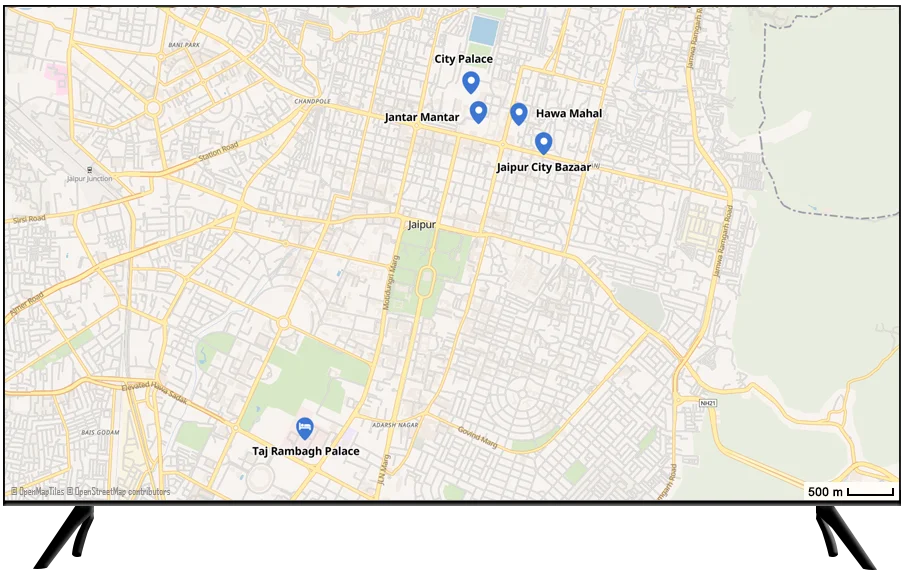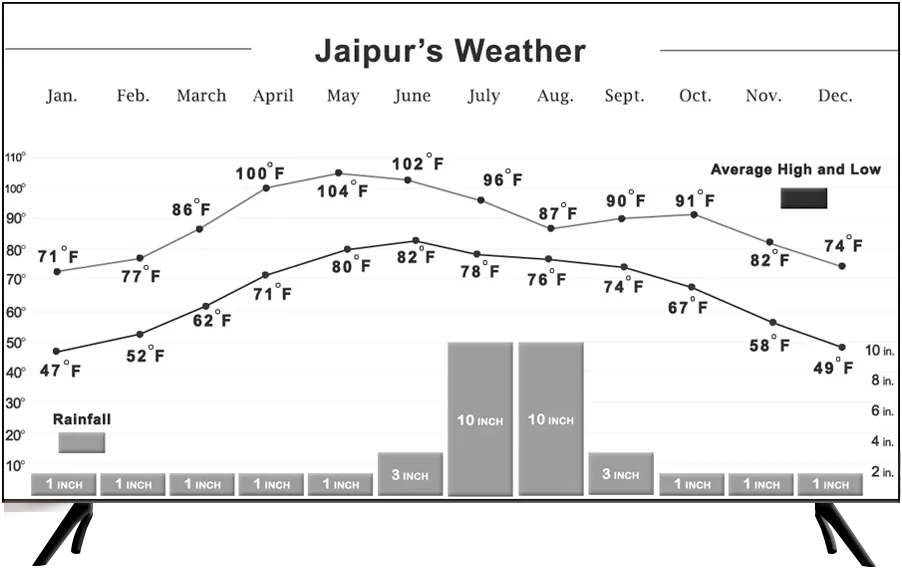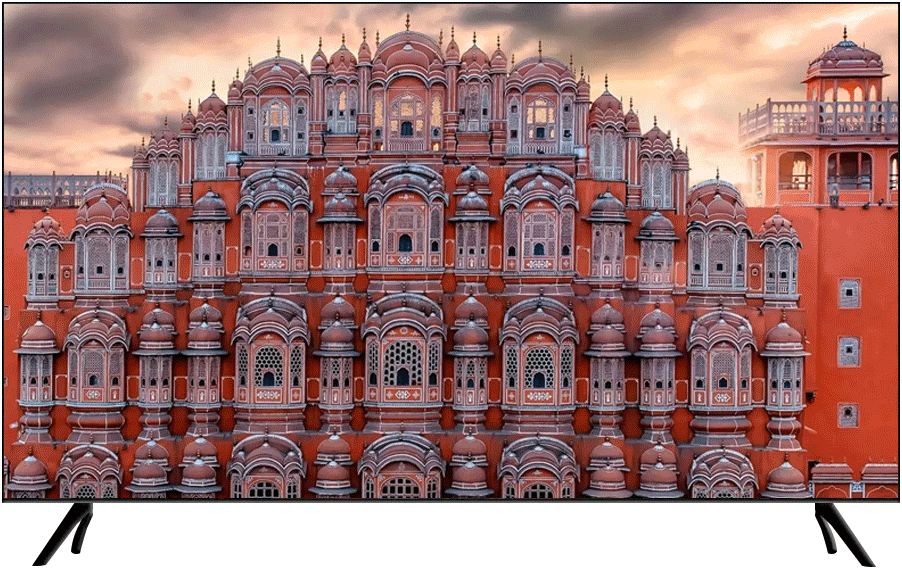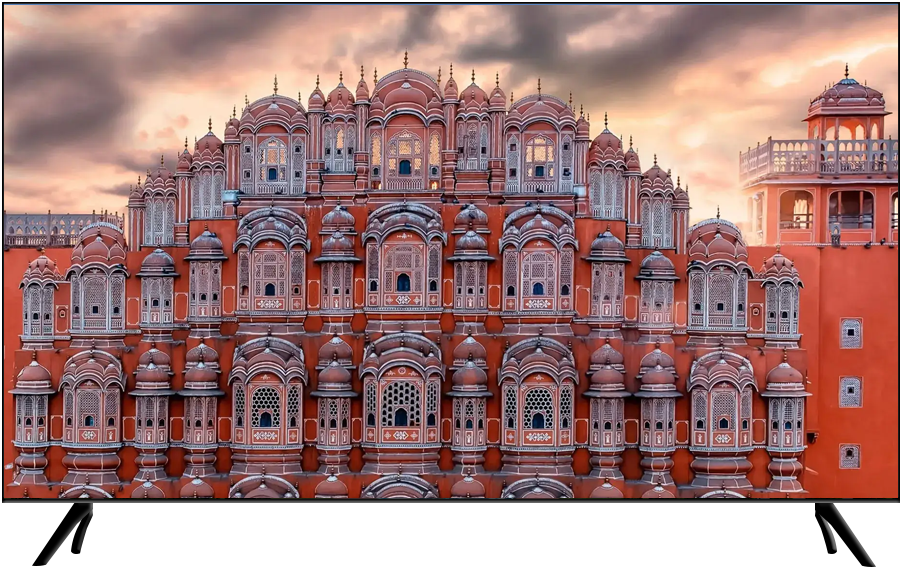



Nov 23rd. Jaipur
Overnight – Rambagh Palace
Begin your exploration of the walled pink city of Jaipur. You will start with a stroll through the fascinating main bazaar in the heart of the pink city and watch the locals as they shop for pretty much everything a consumer can possibly want. This atmospheric and crowded bazaar has street sellers of vegetables, fruit and other goods occupying the curbs with their displays. There are stores selling spices, nuts, flowers, toys, footwear, hardware, and a lot more, mixed in with street food vendors and brick and mortar eating establishments. Byzantine alleys lead into inner courtyard shops.
After a few minutes of walking, you will arrive at the most photographed of Jaipur’s monuments, the enchanting Hawa Mahal (Palace of the Wind). This intriguing facade was built in 1799 so that the ladies of the court could use its unique windows and observe the bustling bazaar without being visible to the people on the streets.
Jaipur is India’s capital for jewelery, and the largest supplier of exquisitely crafted jewelery to much of the world, and Johri Bazaar (jewelers’ market) is a historic enclave that happens to be the center of the largest precious stone cutting area on our planet. You will experience a short walk through a section of the area (please note that all the jewelry manufacturers are located on higher floors and so you will not be seeing the jewelers at work) and soon arrive at a small boutique hotel, The Johri. This five-room inn has an excellent restaurant where you will enjoy lunch. Locally sourced fresh organic vegetarian cuisine is served here, and you will order ala carte from their menu of seasonal and regional offerings. We strongly recommend all their chaat and appetizer items, but their main entrees are not to be missed either.
After lunch you will proceed for a visit to the Jantar Mantar (a UNESCO World Heritage Site), a fascinating stone observatory built in 1728. Among other instruments, it includes a massive stone sun dial that is accurate to within 2 seconds. Located next to Jantar Mantar is the City Palace, the royal residence that was built in a delightful blend of Rajasthani and Mughal architectural styles. A part of this massive complex is still occupied by the Royal family and is not accessible to the public. Your Tour Director will regale you with stories of royalty as you admire their trappings. This immense complex also houses a number of museums that include displays of armor, miniature paintings, and a large and impressive collection of ancient royal garments and accoutrements.
Begin your exploration of the walled pink city of Jaipur. You will start with a stroll through the fascinating main bazaar in the heart of the pink city and watch the locals as they shop for pretty much everything a consumer can possibly want. This atmospheric and crowded bazaar has street sellers of vegetables, fruit and other goods occupying the curbs with their displays. There are stores selling spices, nuts, flowers, toys, footwear, hardware, and a lot more, mixed in with street food vendors and brick and mortar eating establishments. Byzantine alleys lead into inner courtyard shops.
After a few minutes of walking, you will arrive at the most photographed of Jaipur’s monuments, the enchanting Hawa Mahal (Palace of the Wind). This intriguing facade was built in 1799 so that the ladies of the court could use its unique windows and observe the bustling bazaar without being visible to the people on the streets.
Jaipur is India’s capital for jewelery, and the largest supplier of exquisitely crafted jewelery to much of the world, and Johri Bazaar (jewelers’ market) is a historic enclave that happens to be the center of the largest precious stone cutting area on our planet. You will experience a short walk through a section of the area (please note that all the jewelry manufacturers are located on higher floors and so you will not be seeing the jewelers at work) and soon arrive at a small boutique hotel, The Johri. This five-room inn has an excellent restaurant where you will enjoy lunch. Locally sourced fresh organic vegetarian cuisine is served here, and you will order ala carte from their menu of seasonal and regional offerings. We strongly recommend all their chaat and appetizer items, but their main entrees are not to be missed either.
After lunch you will proceed for a visit to the Jantar Mantar (a UNESCO World Heritage Site), a fascinating stone observatory built in 1728. Among other instruments, it includes a massive stone sun dial that is accurate to within 2 seconds. Located next to Jantar Mantar is the City Palace, the royal residence that was built in a delightful blend of Rajasthani and Mughal architectural styles. A part of this massive complex is still occupied by the Royal family and is not accessible to the public. Your Tour Director will regale you with stories of royalty as you admire their trappings. This immense complex also houses a number of museums that include displays of armor, miniature paintings, and a large and impressive collection of ancient royal garments and accoutrements.

